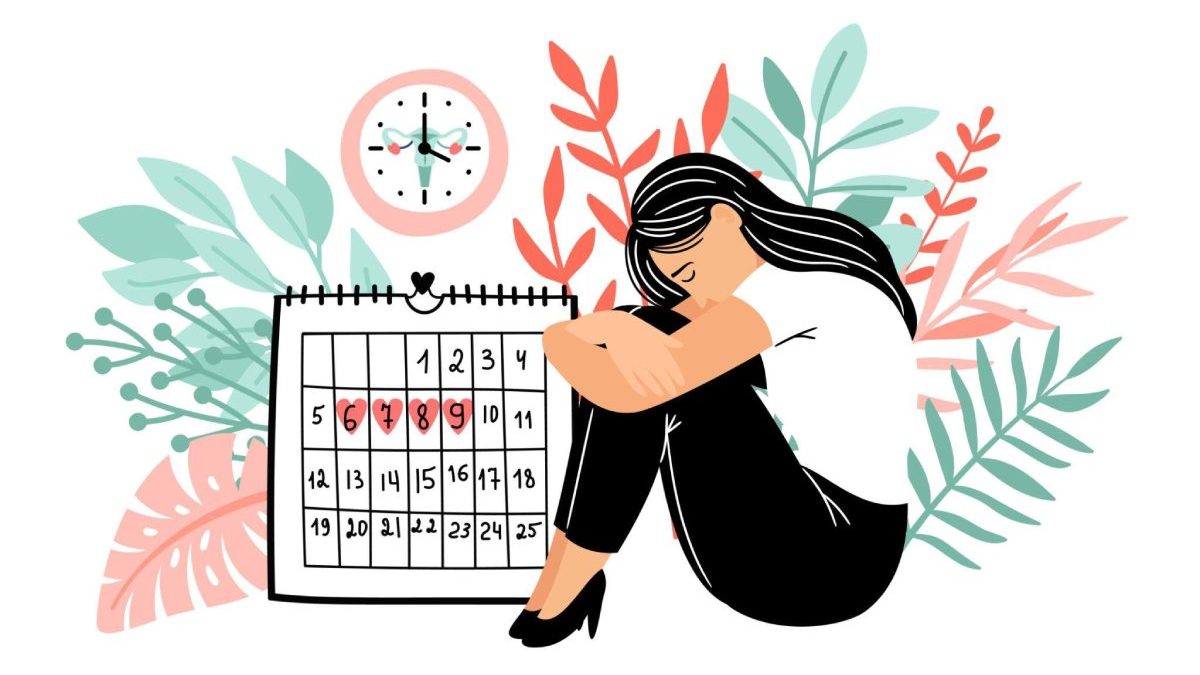Do you suffer from painful periods? If so, you’re not alone. Many women suffer from painful periods. And unfortunately, there are many different reasons why you may experience uncomfortable periods. Whether it’s menstrual cramps (also referred to as dysmenorrhea) or intense mood swings as a result of premenstrual syndrome (PMS), periods can make it difficult to go about your daily routine.
Thankfully, there are things you can do to manage your discomfort. In this article, we break down the causes of painful periods and explain what you can do to find relief:
Table of Contents
What Causes Painful Periods?
As mentioned above, there are several reasons for period pain. Luckily, many of these conditions can be managed with birth control, but it’s still important to know what’s causing your pain.
One of the most prevalent causes of period pain is PMS. While common, PMS can cause a wide variety of symptoms, like mood swings, tender breasts, muscle pain, headaches, and fatigue. PMS typically starts a few days before menstruation and continues the first couple days of your cycle. PMDD (premenstrual dysphoric disorder) is similar to PMS but causes more severe symptoms.
Endometritis is another disorder that can cause painful periods. Endometriosis is when your endometrium (aka your uterine lining) grows outside of the uterus. This is a problem because during your period your body sheds uterine tissue. If your endometrium grows outside, there’s nowhere for that tissue to go, so it gets trapped in your body. This leads to heavy bleeding, painful cramps, and other uncomfortable symptoms.
Fibroids and ovarian cysts also commonly cause painful periods. Fibroids are growths on the uterus, while, as their name suggests, cysts grow on the ovaries. While typically harmless, many women who develop these masses experience heavy, irregular, and painful periods.
How Can You Combat Painful Periods?
Now that you know what may be causing your period pain, let’s take a look at what you can do about it. Here are a few tips to combat your painful periods:
1. Birth Control
Birth control, especially hormonal birth control, can help manage period pain. One reason is because birth control delivers hormones to your body in steady doses, which can help keep your levels more predictable. This is especially true for cramps, since the hormone prostaglandin triggers uterine muscles to contract. Taking hormonal birth control helps regulate that hormone, helping to keep cramps at bay.
Birth control can also help control painful periods brought on by endometriosis. Birth control reduces levels of the hormone estrogen, slowing down the growth of endometrial-like tissue. This can help alleviate pain and other symptoms that occur during your menstrual cycle.
What’s nice about birth control is that it comes in different forms. From the pill to the patch, you can find the right option for your lifestyle. Just make sure you’re aware of how each type works. You want to ensure the birth control you chose is meeting your needs without too many complications.
2. Be Careful About Your Diet
Believe it or not, some foods can actually worsen period pain. One of the worst types, when you’re menstruating, is food that causes bloating and discomfort. For example, salty and fatty foods. Depending on your dietary restrictions, you may also experience discomfort after consuming dairy, gluten, or alcohol. Whatever food leaves you bloated, go ahead and avoid that the week before and during your period.
Caffeine can also cause bloating and inflammation that can make your period worse. Caffeine also slows the flow of blood in your uterus, leading to discomfort. Consider swapping your daily coffee with green tea, which is full of antioxidants that have anti-inflammatory effects.
You should also consider introducing foods that can help reduce inflammation, like fatty fish and avocado. Vegetables and fruits also have anti-inflammatory properties. Try to introduce more spinach, kale, berries, and oranges to feel better during that time of the month.
3. Try Low-Impact Exercises
Did you know exercise is a great way to relieve cramps? Exercising produces analgesia in your body, which works as a pain reliever. Exercising also burns prostaglandins, which is what causes contractions during menstruation.
While working out may be the last thing you want to do during your period, it may be the best thing you could do. Keep in mind this doesn’t mean you have to run a marathon or go to a Crossfit class. Low-impact exercise, like walking, swimming, or going to a yoga class, can be enough for you to reap the benefits.
Exercise also releases endorphins into your body, which are known as a “happy hormone.” These hormones help you feel good from the inside and out, so you’re less likely to dwell on the discomfort and pain you feel during your cycle.
4. Alleviate Stress
Chances are, you know stress can have a negative impact on your day-to-day life. It can mess with your sleep, cause you to gain weight, lose weight, and make it difficult to complete everyday tasks. Well, it turns out stress can also make your period unbearable. More specifically, it can worsen the pain you feel from cramps.
To combat the effects of stress, consider adopting techniques to calm your mind. Meditation, deep breathing, yoga, and journaling, can be beneficial. Making sure you follow a healthy diet and go to sleep on time can also lower your stress levels.
If you don’t find success after adopting certain techniques, that may be a sign you should consult with a professional. A therapist or a psychiatrist can help you determine what’s causing your stress and create a plan to help.
Painful periods are common, but that doesn’t mean you can’t do anything to alleviate the pain. From eating anti-inflammatory foods to going on birth control, the tips above can help you manage your discomfort.

